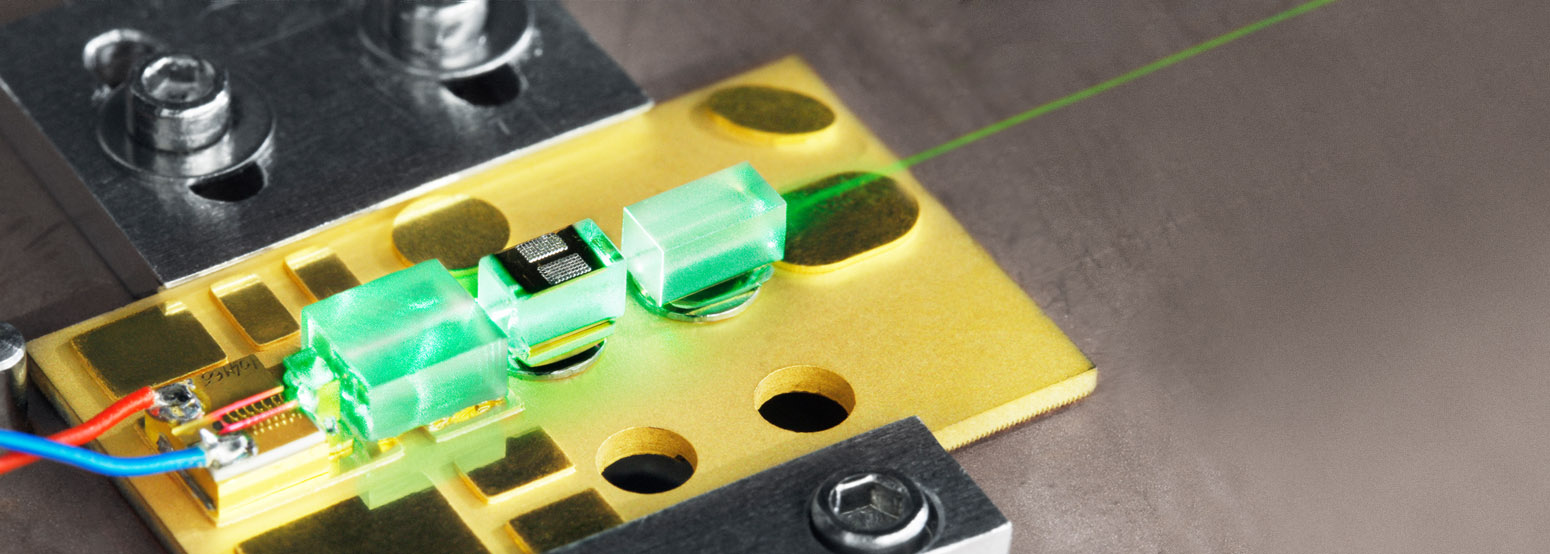Motivation
Diode-pumped and passive Q-switched microchip lasers based on various laser crystals and saturable semiconductor mirrors are used as absorbers (SESAM) to generate short and ultrashort laser pulses.
The major disadvantage of Q-switched lasers is a strong time jitter arising from the resonator dynamic, ambient instabilities and the statistical character of the spontaneous emission in the amplification medium.
The monolithically bonded, passive Q-switched microchip lasers at Fraunhofer IOF are based on Nd3+:YVO4 and SESAM. They generate pulse durations of less than 200 ps with pulse energies greater than 150 nJ with pulse repetition rates in the range of 100 kHz to a few MHz. These good output parameters are depreciated by the relatively strong time jitter, typically 1% of the pulse repetition period.
Solution
A simple and cost-effective method based on self-feedback is developed to reduce jitter. By using an optical fiber as a delay line, a small amount of the photons are removed from the previous laser pulse and supplied to the laser briefly prior to initialization of the following pulse. As a result, the statistical initialization of the optical pulses in the laser resonator is replaced by a determinist process and thereby the time jitter reduced.
Implementation of this principle reduces time jitter in a microchip laser by a factor of over two orders of magnitude.Anwendung
Application
On account of their simplicity, microchip lasers are suitable for a broad range of applications such as frequency multiplication, micromaterials processing and LIDAR.
